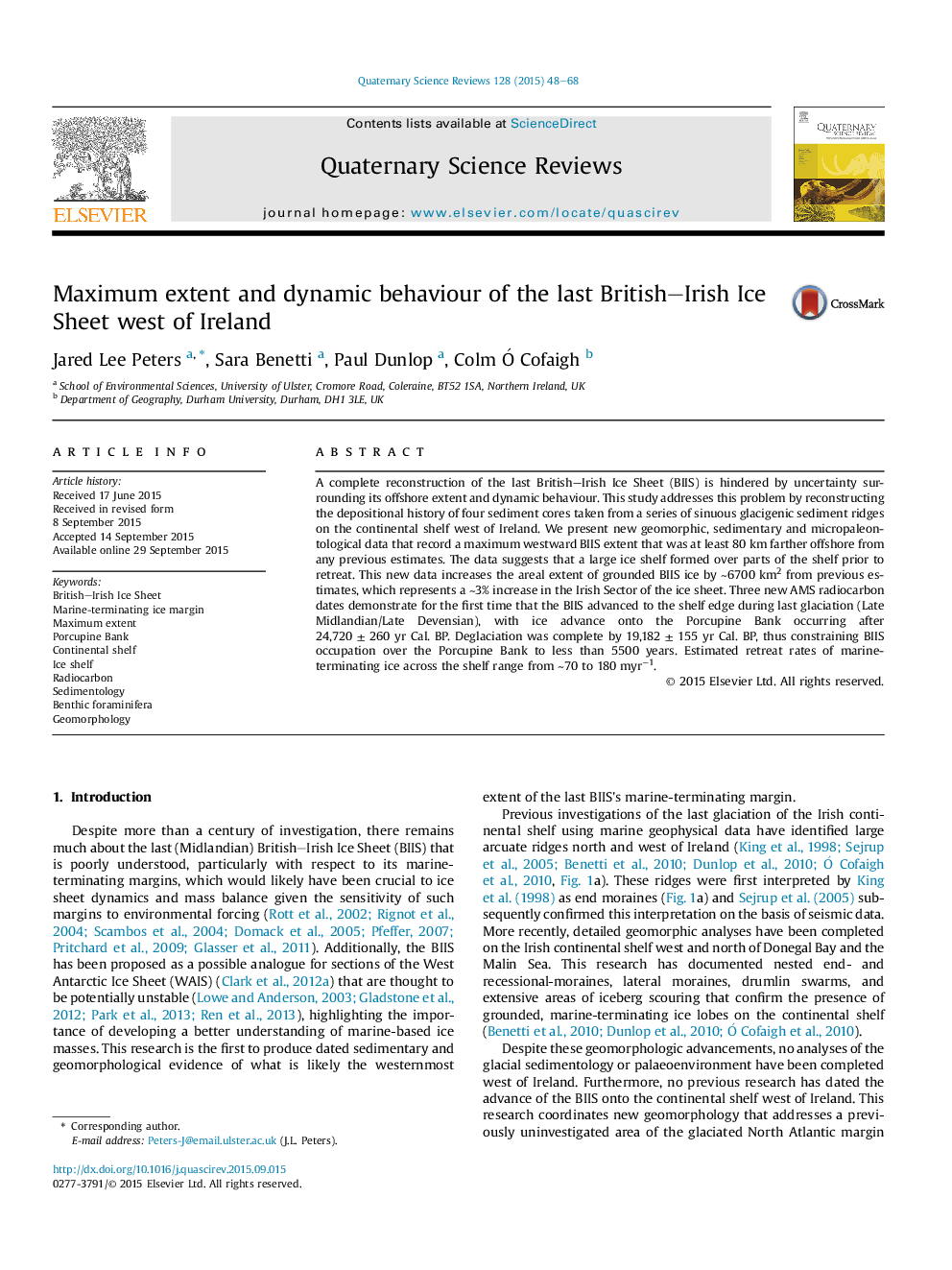| Article ID | Journal | Published Year | Pages | File Type |
|---|---|---|---|---|
| 4736137 | Quaternary Science Reviews | 2015 | 21 Pages |
•Our findings extend the BIIS margin by at least 80 km past previous estimates.•New radiocarbon ages constrain westernmost advance to after 24,720 ± 260 Cal. BP.•Palaeoenvironmental data suggest ice shelf development and readvancing ice.•Multiproxy evidence marks ice shelf break up ≤ 5500 yrs after formation.•The ice shelf break up preceded an ice retreat rate of ∼180 to 72 m/yr.
A complete reconstruction of the last British–Irish Ice Sheet (BIIS) is hindered by uncertainty surrounding its offshore extent and dynamic behaviour. This study addresses this problem by reconstructing the depositional history of four sediment cores taken from a series of sinuous glacigenic sediment ridges on the continental shelf west of Ireland. We present new geomorphic, sedimentary and micropaleontological data that record a maximum westward BIIS extent that was at least 80 km farther offshore from any previous estimates. The data suggests that a large ice shelf formed over parts of the shelf prior to retreat. This new data increases the areal extent of grounded BIIS ice by ∼6700 km2 from previous estimates, which represents a ∼3% increase in the Irish Sector of the ice sheet. Three new AMS radiocarbon dates demonstrate for the first time that the BIIS advanced to the shelf edge during last glaciation (Late Midlandian/Late Devensian), with ice advance onto the Porcupine Bank occurring after 24,720 ± 260 yr Cal. BP. Deglaciation was complete by 19,182 ± 155 yr Cal. BP, thus constraining BIIS occupation over the Porcupine Bank to less than 5500 years. Estimated retreat rates of marine-terminating ice across the shelf range from ∼70 to 180 myr−1.
